This blog was jointly produced by John Butterworth (IRC Ethiopia Country Director) and Nick Dickinson (IRC Associate / WASHNote). It was posted on IRCWASH.org.
AfricaSan5 just like a five-year old, reflects a sanitation and hygiene sector that is nowhere near mature, but is growing up fast and is full of ambition. And when you get to five, we know you have a good chance of going all the way in life and achieving great things. We need to grow up quickly to answer the call in the Camissa Statement, where the conference stakeholders “call upon Heads of State of the Africa Union to declare an Africa-wide state of emergency on sanitation and hygiene and to be sanitation and hygiene champions in their respective countries.”
During the opening plenary, Kitch Bawa presented highlights from the AMCOW report ‘Is Africa on track to achieve the SDGs (Sustainable Development Goals) on Sanitation?‘. Neither the report or Kitch directly answered that question directly, but the answer looks like… no. There is a lot of evidence that the conditions are not right to make such dramatic progress. But instead of worrying about a glass half empty, there is a plausible argument to say it’s half full. Kitch Bawa’s presentation and the underlying report are full of ideas about what we all need to do, all based on the baseline monitoring of progress against the Ngor Commitments decided by African countries at AfricaSan4 in 2015.
After supporting the baseline, IRC took on the challenge to support the AfricaSan International Task Force (AITF) and organise the theme ‘Monitoring and using evidence to improve hygiene and sanitation‘ at AfricaSan5. More and more on what we need to do. All made possible by a long list of partners1, with seven sessions spanning the three days of the event. For the benefit of participants who missed AfricaSan5 or its monitoring sessions, this is a flavour of what happened there.
“If we can’t measure progress, we can’t reach the SDGs” said Kelly-Ann Naylor, UNICEFs global WASH lead. Monitoring in countries needs to be driven by governments and the first session in monitoring theme focused on strengthening government-led monitoring. UNICEF, with IRC and Akvo, have been working on just this with West African countries (in 2019 they are also expected to expand the effort to some East Africa countries). To help build on what is already there, a tool for a participatory assessment and planning of WASH monitoring systems has been developed, and then used in 10 countries. From Benin, Mali, Mauritania, which are amongst countries included with relatively strong monitoring systems, we heard that there are many challenges with current WASH M&E. The effort there developed costed national M&E plans to address these challenges in country-led approaches. Will countries find the resources and implement them? Mauritania shared its first steps.
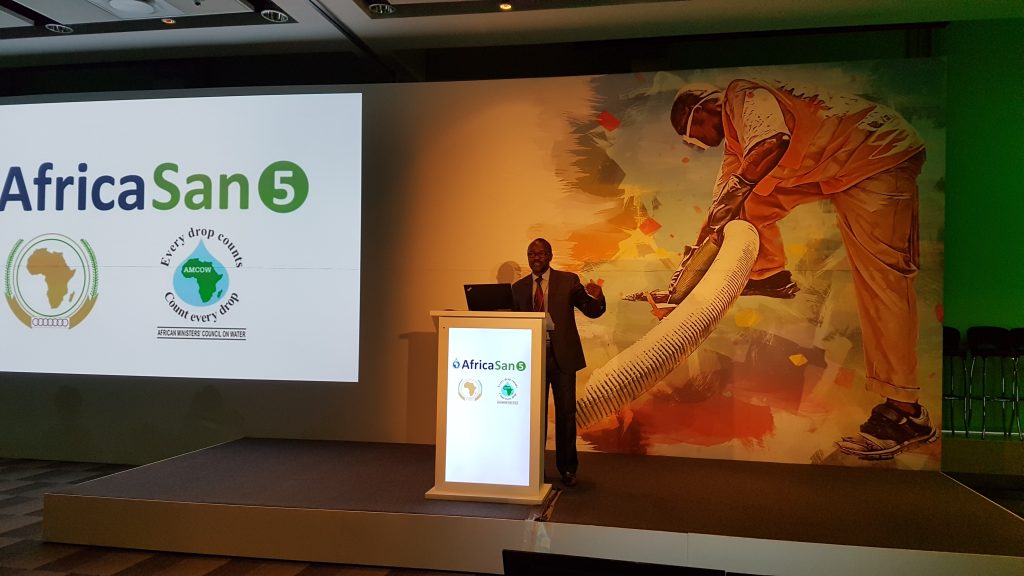
Ruben Bayiha (above) from UNICEF WCARO called ‘for governments to implement, as each must be able to monitor on their own’. In the same session, Trinah Kyomugisha (below) from the Ministry of Water and Environment in Uganda showed how her government is doing just that and owning monitoring.
We heard about how Uganda has piloted the monitoring of safely managed sanitation services. This has shown that access to safely managed sanitation is only 26% in small towns, and 58% in Kampala where most emptiers and disposal sites are located. A key finding was a need to simplify the safely managed indicator for the local context in order to make it possible to monitor (and learn) more.
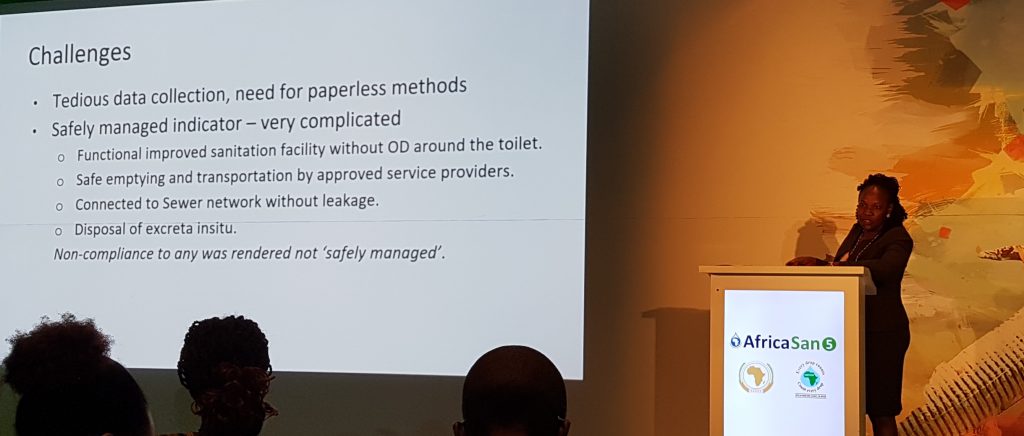
What are the hardest things to monitor? Equity and sustainability are surely on the list, and a specific session (Measuring the last mile…) took on this challenge. We heard results from detailed monitoring of Global Sanitation Fund projects from the Water Supply and Sanitation Collaborative Council (WSSCC), showing big gaps from CLTS initiatives in Malawi, Tanzania, and Kenya assessing exposure to activities. Plan shared results from similar large-scale household surveys in Tanzania. How such results can be used to change things was a topic of debate. Ghana was cited as an example of government that has done it, using data on inequalities to improve the design of interventions and subsidies to reach the poorest. We also heard, the first time for us, some new language. The UNICEF/WHO Joint Monitoring Programme (JMP) are considering referring to ‘nearly universal and nearly eliminated’: seeking to highlight that there will be pockets and gaps in progress, and increase the debate on how to measure and how to reach those people. Leaving no one behind.
The session on WASH in schools (WinS) was commendable in giving equal focus on what to do with results, as generating them in the first place. Although the WinS situation is bad, very bad (see the 2018 JMP report on WASH in schools), and children have been left behind, we can find heart and inspiration in a sub-sector that is making a huge effort to do better. And it is putting monitoring and learning at the centre of that. Appropriately, the education sector is showing how evidence-led change is done. That gives hope for progress over the coming years. Examples were shared from Uganda, Guinea, Mali, Ghana, and Madagascar, with lots of lessons learned, including the challenge of maintaining monitoring beyond baselines.
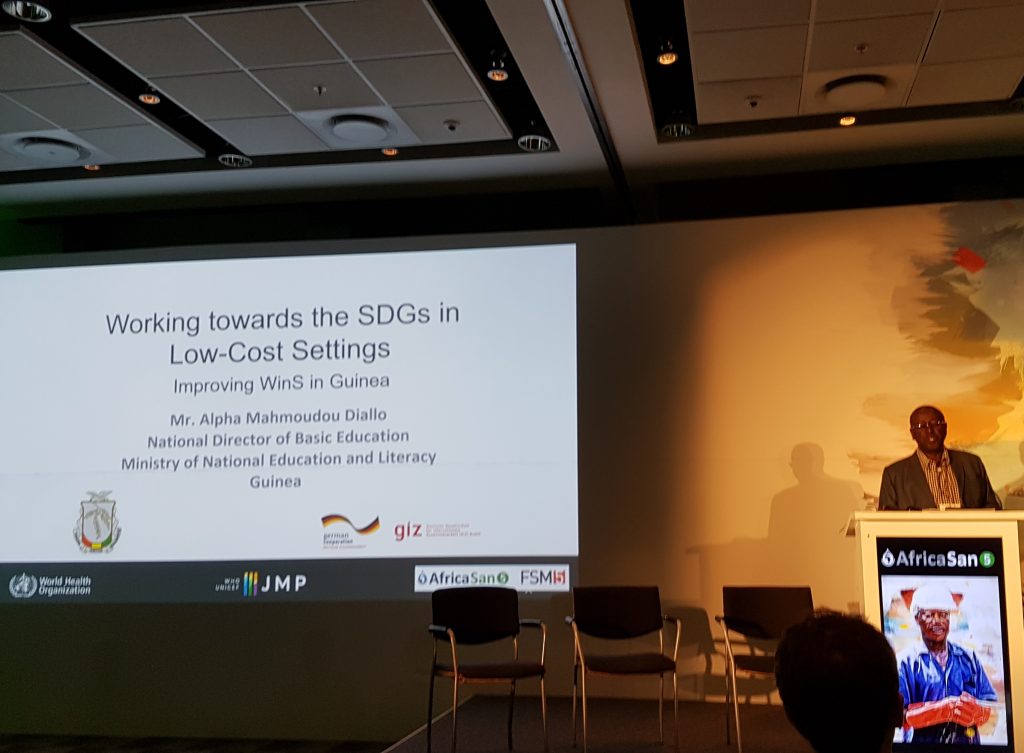
Top innovator Neil Macleod (below) provided a local chair and sharp insights for the session on using clever mobile technologies in container-based sanitation.
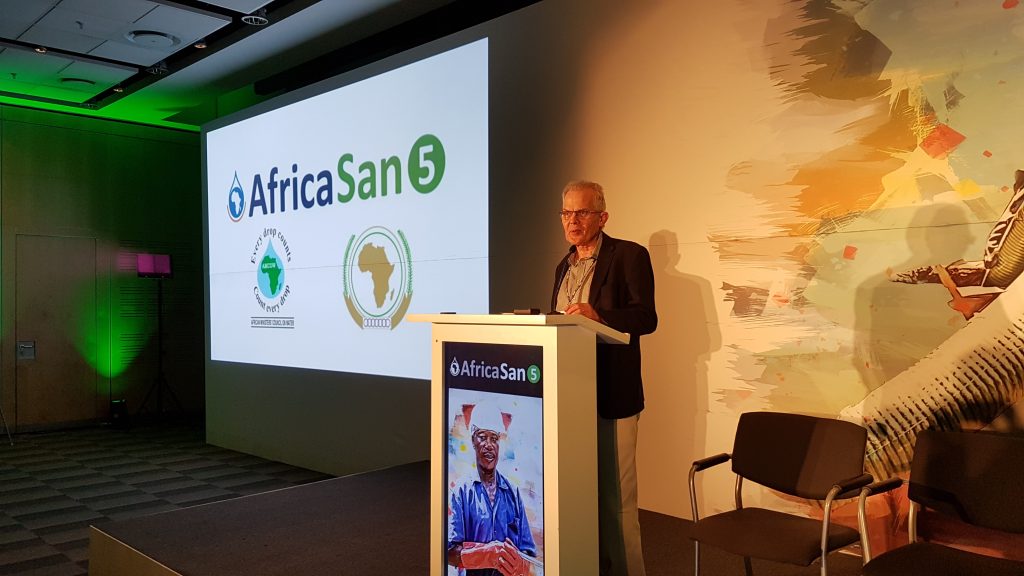
This is a sub-sector, after all, with an awful lot of logistics. GSMA – the trade association of 800 mobile operators – shared experiences from their 6 grants to date supporting sanitation initiatives. These use mobile payments, machine to machine connectivity, or mobile services (calls, messaging etc) to improve services. Examples are Loowatt in Madagascar who use a mobile app to track waste collection and collect payments, and Sanergy in Kenya use sensors to optimise waste collection. A novel initiative from the Container-based Sanitation Alliance is developing an online and mobile platform to service the sector, rather than each business needing to innovate alone. From Kenya, we also heard from the national regulator on how mobile money has transformed revenue collection (from <50 to over 95%).
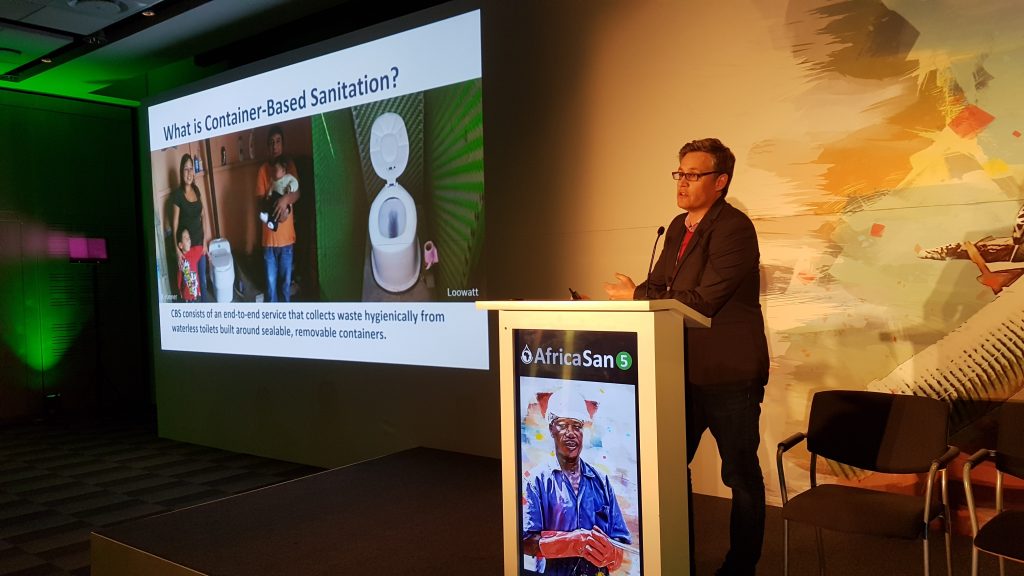
Chilufya Chileshe (below) from WaterAid reminded us that we are “doing to hygiene what we did to sanitation” while Tom Slaymaker from UNICEF was even stronger: “We are paying lip service to hygiene…we don’t have data…who else do we need at the next AfricaSan”.
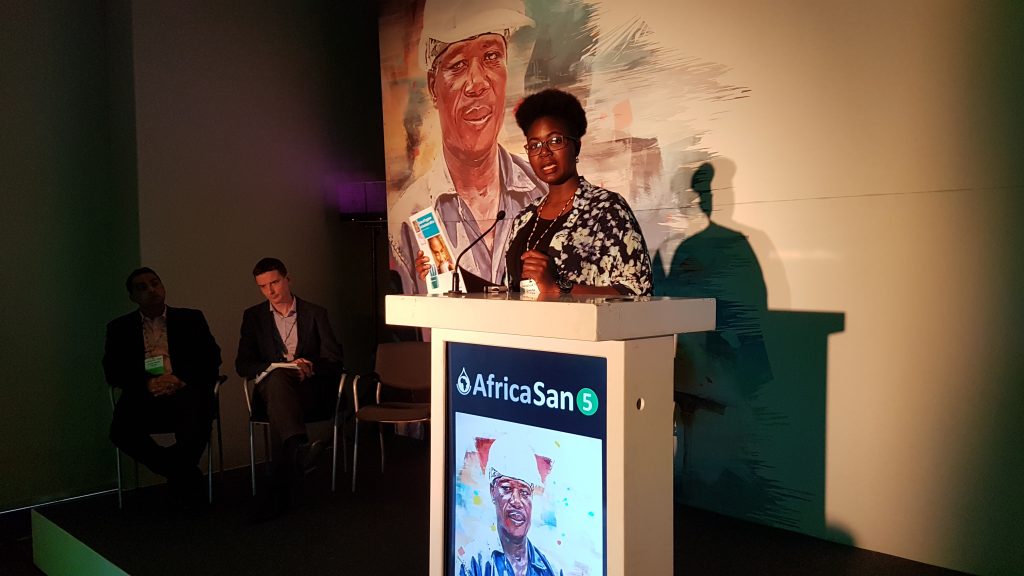
But at least the JMP now have a separate indicator (on handwashing, with Menstrual Hygiene Management to follow, and in 2019 a new report on Health Care Facilities). Om Prasad Gautam, also from WaterAid, made a pitch for the new approaches in behavior change. Out: printing posters and dire health messaging. In: thinking about emotions and the environment. Monitoring and learning is obviously important here. Do the new approaches work better? Belinda Makhafola (below) from the South African Department of Health spoke passionately about understanding bottlenecks to sustaining hygiene behaviour and improving monitoring and private sector participation was part of that.
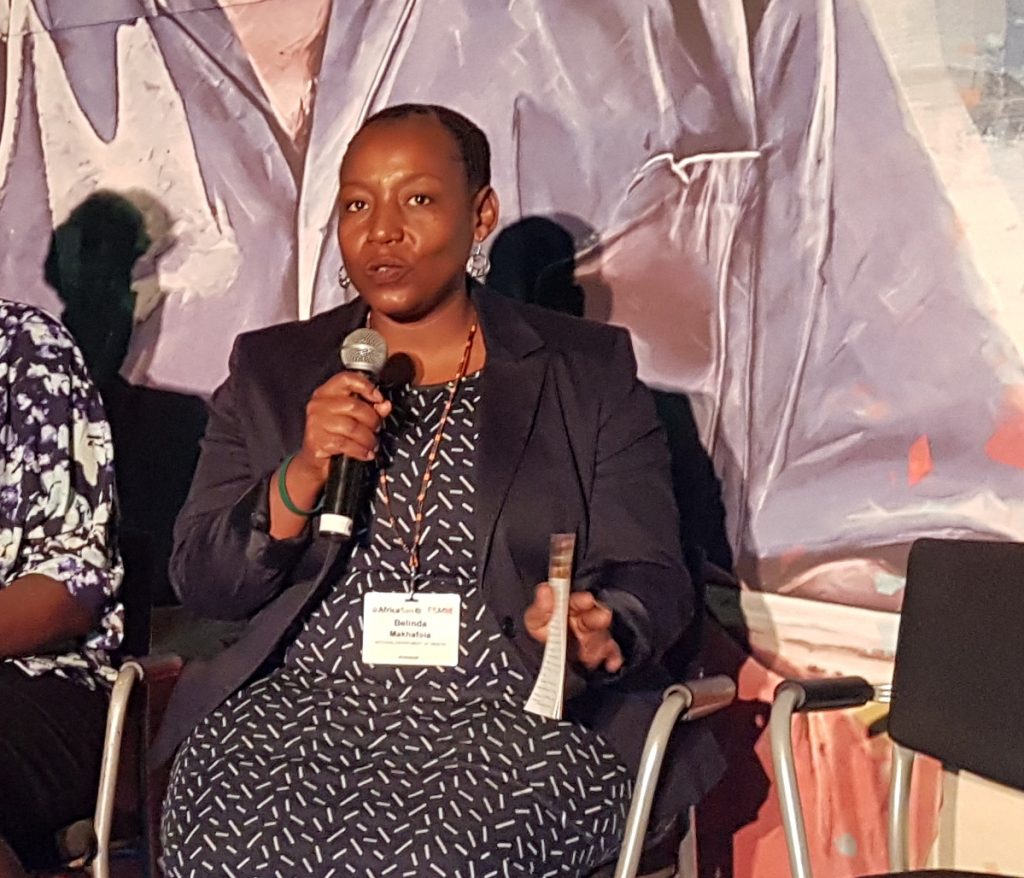
The challenges in monitoring Community Led Total Sanitation (CLTS) and post-Open Defecation Free (ODF) were discussed in a session chaired by the Government of Mali with insights from Mali and Guinea-Bissau.
The Guinea Bissau Director of Water Resources (below) told us ‘We need to learn how to use data to target interventions, we are poorly coordinated, we need to harmonise’. Using the mWater platform, UNICEF have supported the monitoring of 1152 PACOMA (ODF) communities in a integrated WASH system that includes data on all water points.
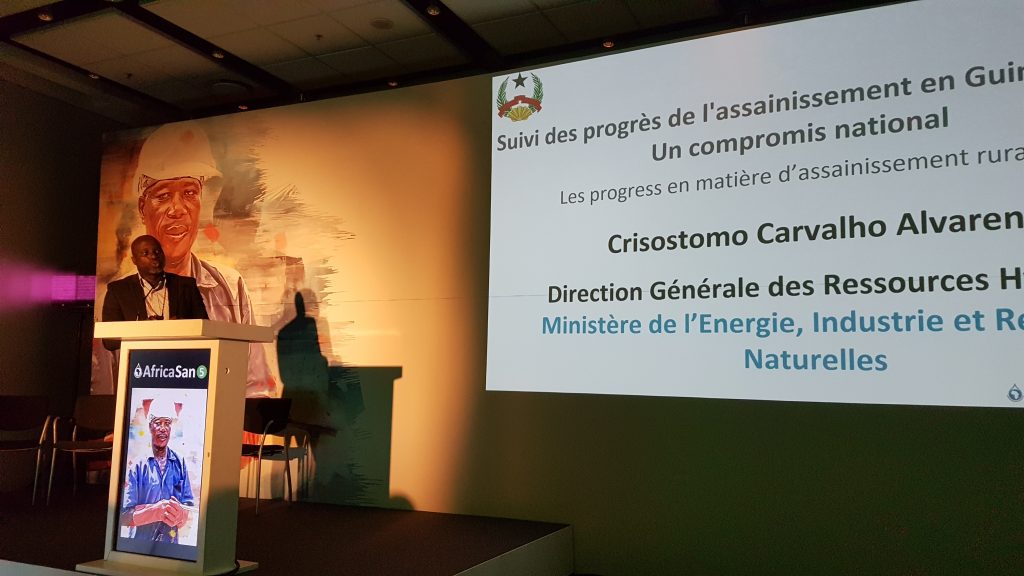
‘There is a very urgent need to learn, what is working and what is not working’ said Robert Chambers (IDS). And it needs to be timely, relevant and actionable. A session on Rapid Action Learning drew on insights from India and the Swachh Bharat Mission in India. These huge campaigns transform the learning challenge and we heard that we are going to need such campaigns in Africa. So, we will need to think about ideas for rapid learning too. Peer-to-peer horizontal learning, hunter gathering, debiasing and rapid reporting are some of the tools you might need to facilitate effective learning at scale. Debiasing…..go out, get lost and learn.
Ghana, Benin and South Sudan shared their experiences in the session where for the first time we got up and walked around to look at posters in small groups. Keep it interesting and people learn. This has had an important effect on the applicability of tools in local contexts. In Benin (below) alone, 20 distinct variations of CLTS have been documented and shared among practitioners via whatsapp and other local channels for learning and facilitating knowledge exchanges.
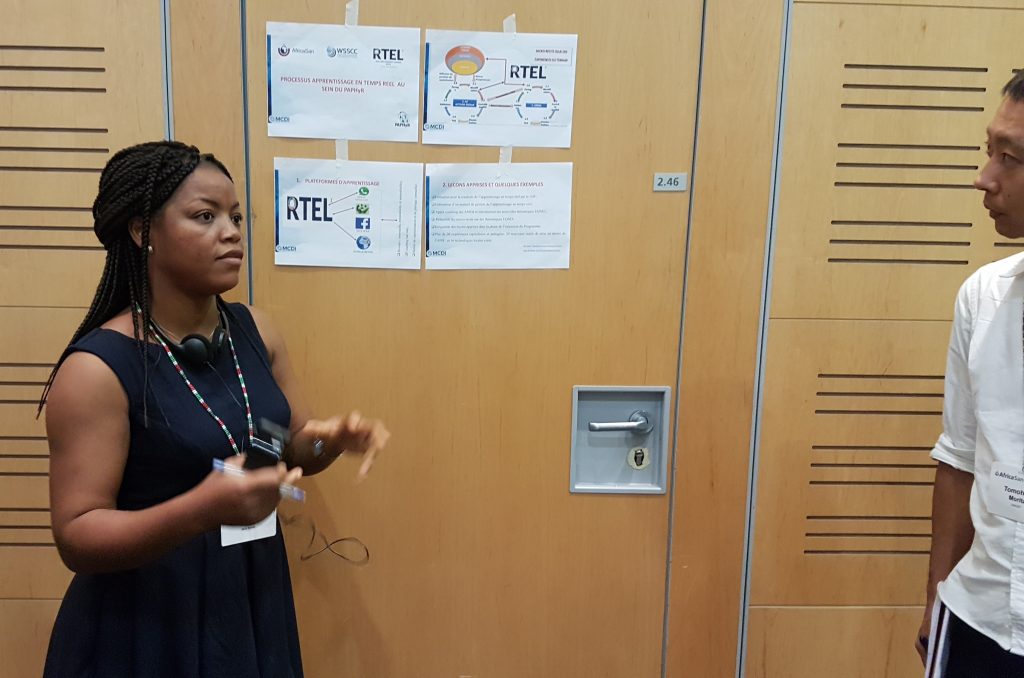
The Deputy Minister for Ghana (below) concluded the final session with a challenge for us all: “we are heading towards 2030, a lot goes into innovation and then results are lying on shelves. It’s useless.”
We were not being useless at AfricaSan5. Delegates from across Africa came to Cape Town. And since the sister FSM (fecal sludge management), who is also five was there, the twin conferences benefited from wider participation, especially from Asia. Well done to all who created a learning opportunity.
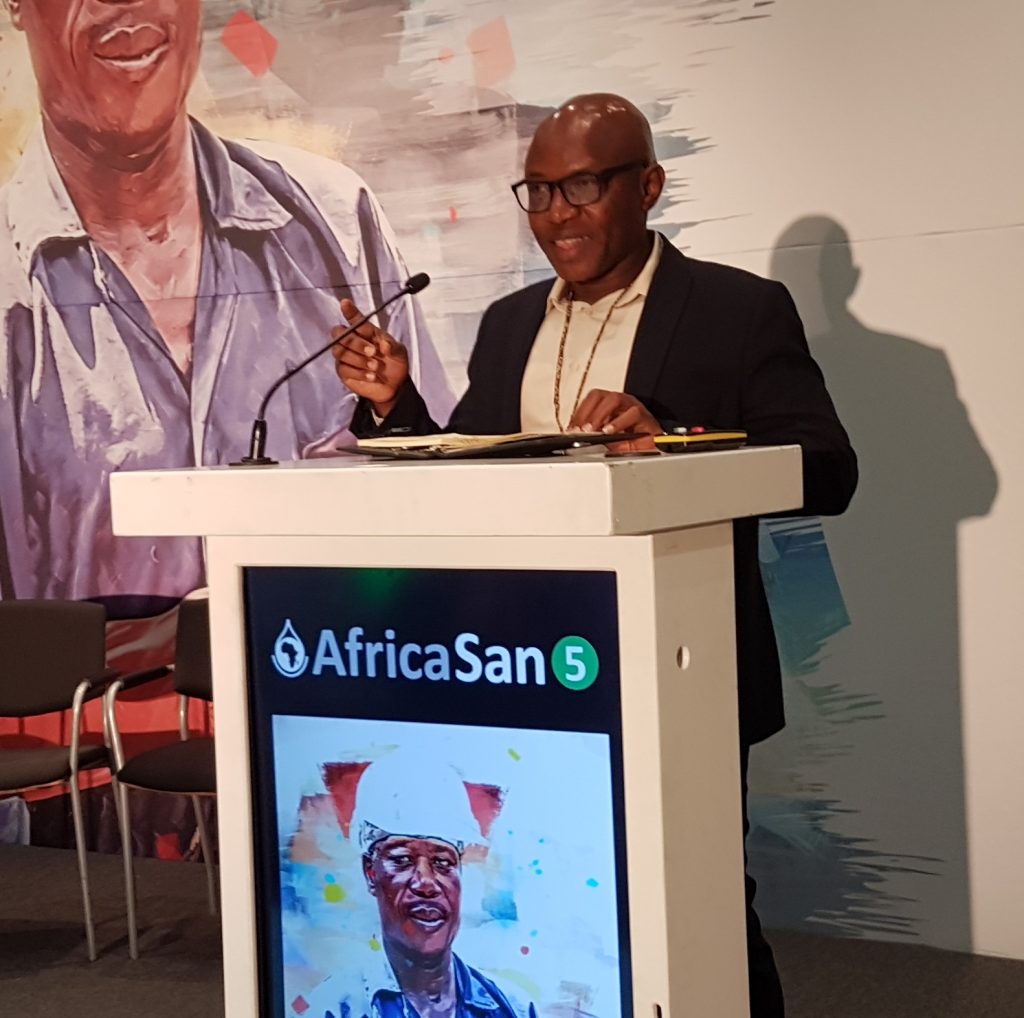
1Big thanks to all the partners that helped make this event a success, including:
- AMCOW
- CARE Mali
- CBSA
- DNACP Mali
- GIZ
- Global Communities
- GSMA
- IDS
- IRC
- KCCA – Uganda
- Loowatt
- Ministry of Education – Guinea
- Ministry of Energy Industry and Natural Resources – Guinea-Bissau
- Ministry of Health – Kenya
- Ministry of Water – Mali
- Ministry of Water and Environment – Uganda
- Ministry of Water and Sanitation – Ghana
- Ministry of Water and Sanitation – Mauritania
- Plan Tanzania
- SuSanA
- SWA
- UNICEF
- UNICEF Chad
- UNICEF Ghana
- UNICEF Guinea-Bissau
- UNICEF Mali
- UNICEF WCARO
- University of Oregon
- WaterAid
- WHO
- WHO/UNICEF JMP
- WSSCC
- AfricaSan International Task Force
The AMCOW Sanitation Sub-Committee on Monitoring and Learning.

Comments (2)